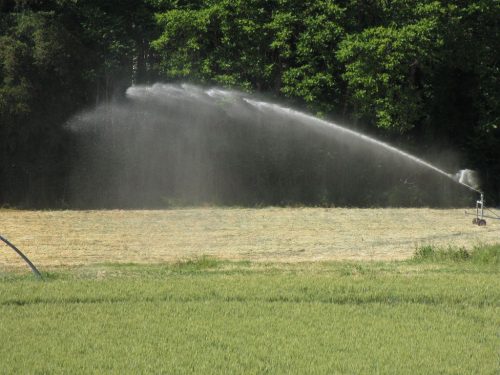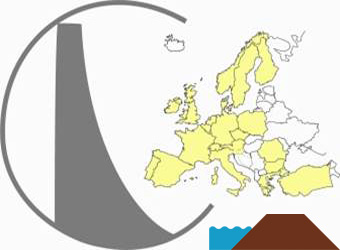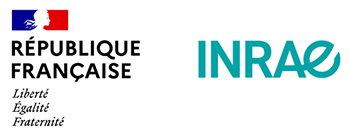
Sprinkler Irrigation (picture by Colette Fatou, Irstea)
While some countries like Japan and some Balkan countries have suffered from severe floods during the spring and early summer of 2018, The Netherlands and England are suffering from severe drought.
In both England and The Netherlands, June 2018 ranks along the 6 warmest and driest June months of the last century and has been record setting in places, with locally just a few millimeters of rain in six weeks’ time. In the Netherlands, the precipitation deficit (precipitation minus evaporation) since the 1st of April is now reaching 200 mm, twice the long-term average for mid-July.
The drought has led to a remarkable situation, which has not gone unnoticed amongst the news media: Some of the levee managing organizations in the Netherlands have now started to irrigate their levees. A remarkable situation indeed, because not only too much water turns out to pose a danger for levees, but also a shortage of water. This applies especially to levees consisting of peat. These are quite common for the peaty and low-lying Northwestern half of The Netherlands, and are especially used as embankments for the raised canals that are used to drain the polders in this area. After desiccation, the peat in such levees becomes a very light material which might practically float away (or experience uplift) if too much pressure is exerted on such a levee. This was by and large the reason for a peat levee breach after a similar drought in the hot summer of 2003, near the Dutch village of Wilnis.
After the above levee breach, the Dutch Foundation STOWA (www.stowa.nl) has initiated a fair amount of research on peat levees and other small levees, and has come up with guidance for their management during drought. As a result, there is now a protocol, which recommends that from a certain drought level on, levee managers start spraying or irrigating their peat levees, together with intensified inspections. In this way, the risk of cracks and setting of peat (and clay) levees is significantly reduced, as is the risk of sudden failure like in the 2003 case of Wilnis.
Further information can be found on:
- https://www.youtube.com/watch?v=M_c2qQSI7BU Video with interviews on drought management of levees, and during the last 3 minutes (15-18 min) also images of levees being irrigated. Kindly provided by Mr Bouke Rijneker of Hoogheemraadschap Rijnland
- http://www.deltaproof.nl/Publicaties/deltafactIframe/Stabiliteit_veenkade_m_o__klimaatverandering.aspx?rId=19: An extensive summary (unfortunately only in Dutch) of the drought effects and management options for peat levees. The end of the summary also includes a photograph of the Wilnis peat levee breach.



Recent Comments